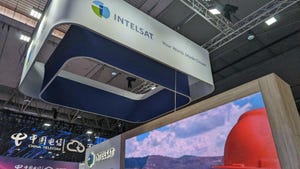LTE is 'embryonic', says Agilent
Despite all the marketing noise that is sure to be generated by LTE supporters during the Mobile World Congress (MWC) in Barcelona this week, Agilent – a test & measurement specialist – believes there is still some way to go before LTE is widely commercially available and delivering the much-touted speeds of 100Mbps and above.
“LTE is pretty embryonic at the moment, with testing confined to NEM [network equipment manufacturer] and service provider labs,” says Paul Gowans, field marketing manager at Agilent’s assurance and diagnostic division. “By the second half of 2009 we will see LTE moving to field testing with the first commercial deployments in early 2010.”
He adds that as the LTE standard is still evolving, it ‘poses certain challenges” for NEMs, carriers and test & measurement companies alike. And instead of the mega broadband speeds promised by the likes of Ericsson, Gowans believes the first commercial LTE offerings will be a much more modest. “I think if [LTE providers] can deliver the equivalent of DSL and cable speeds of around 8MBps, that would be a good service to begin with,” he says. “There is potential to deliver higher speeds on the LTE platform but operators have also got to look at their backhaul infrastructure and see if it can support those higher speeds.”
LTE is a key focus area for Agilent at MWC. On Monday, the test and measurement company announced the availability of what it claims to be the industry’s most complete, end-to-end analysis and troubleshooting solution for LTE networks. The signaling analyzer real-time (SART) for LTE provides monitoring and network diagnostics by interpreting, correlating and analysing protocol signaling messages produced by multiple network technologies at mobile network interfaces.
Agilent is also displaying at MWC a software extension to its existing drive test platform for cellular networks to include LTE, which can be used to quickly verify base-station RF coverage, and plot accurate coverage maps and validate planning.
Gowans did not reveal the names of any NEM or carrier customers for its LTE testing equipment.
About the Author(s)
You May Also Like









.png?width=300&auto=webp&quality=80&disable=upscale)

_1.jpg?width=300&auto=webp&quality=80&disable=upscale)


.png?width=800&auto=webp&quality=80&disable=upscale)